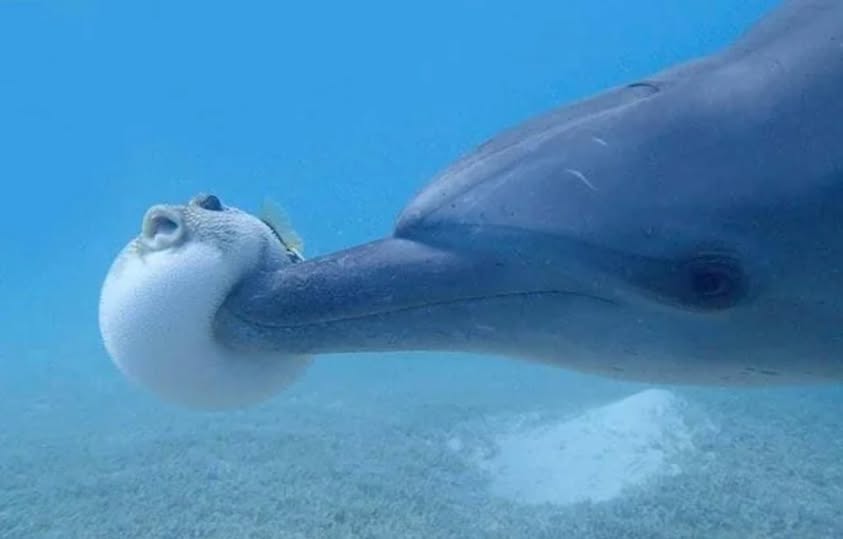It turns out humans aren’t the only species with a penchant for mind-altering substances. From horses nibbling on hallucinogenic weeds to elephants indulging in overripe, fermented fruit, the animal kingdom has its fair share of recreational drug use. Even big horn sheep have been known to seek out narcotic lichen.
Some researchers even suggest that monkeys’ attraction to sugar-rich, ethanol-laden fruit might explain our own evolutionary fondness for alcohol. Now, dolphins may be joining the list of animals that indulge in intoxicating experiences.
New footage from the BBC documentary series Spy in the Pod has captured what appears to be dolphins deliberately interacting with pufferfish, possibly to experience a hallucinogenic high. Pufferfish are known for producing a potent defensive toxin, which they release when threatened.
In large doses, this toxin can be deadly, but in smaller amounts, it seems to induce a “trance-like state” in dolphins that come into contact with it, according to the Daily News.
The dolphins were filmed gently playing with the puffer, passing it between each other for 20 to 30 minutes at a time, unlike the fish they had caught as prey which were swiftly torn apart.
Zoologist and series producer Rob Pilley said that it was the first time dolphins had been filmed behaving this way.
At one point the dolphins are seen floating just underneath the water’s surface, apparently mesmerised by their own reflections.
The footage shows dolphins gently handling the pufferfish, passing it between themselves in what seems to be a calculated and deliberate manner.
This behavior suggests that the dolphins are not only aware of the pufferfish’s intoxicating effects but also know exactly how to manipulate the fish to release just enough toxin to achieve the desired result.
As zoologist Rob Pilley, who worked on the documentary, explained to the Daily News, the dolphins’ skillful and intentional handling of the pufferfish implies that this is far from their first encounter with the hallucinogenic properties of the fish.
While the idea of dolphins seeking out a “high” might seem surprising, it aligns with the growing body of evidence that many animals engage in behaviors that alter their mental state.
Whether it’s for pleasure, curiosity, or some other reason, the dolphins’ interaction with pufferfish adds another fascinating layer to our understanding of animal behavior and intelligence.
This discovery also raises intriguing questions about the evolutionary roots of such behaviors.
Could the dolphins’ deliberate use of pufferfish toxin hint at a deeper understanding of their environment and its effects on their bodies? Or is it simply a playful, instinctive act?
Whatever the motivation, one thing is clear: the natural world continues to surprise us with its complexity and the unexpected ways in which animals interact with their surroundings.


